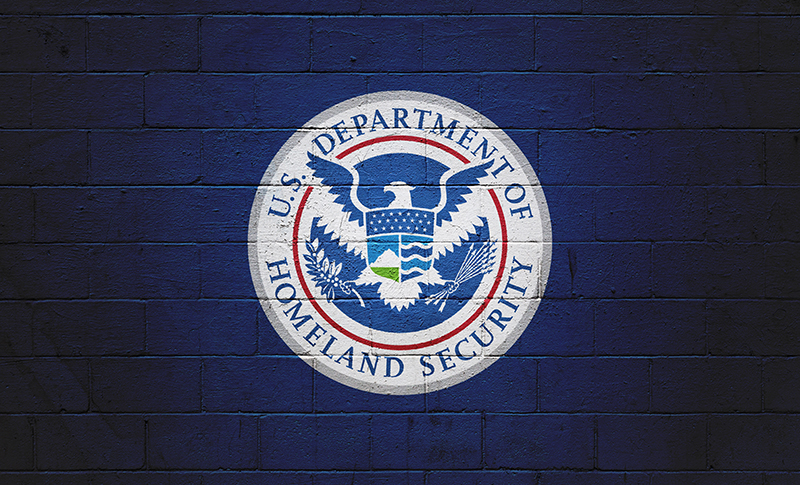
In a series of posts earlier this year, I highlighted several key immigration regulations that the Trump administration was unable to finalize by publication in the Federal Register before Joe Biden’s inauguration. (See here, here, here, and here.) In each piece, I detailed why the Biden administration should finalize these regulations because they reflect sound immigration policy that should cross the political spectrum.
Unfortunately, politics rules the day and the Biden administration quietly and officially withdrew two of the key regulations I highlighted. As a result, a subsequent administration will have to go through the notice and comment period required under the Administrative Procedure Act again before the regulations can be finalized.
The first proposed regulation withdrawn is entitled, “Collection and Use of Biometrics by U.S. Citizenship and Immigration Services”, a long-overdue regulation that would have replaced the current outdated and incomplete screening and vetting techniques that expose the country to fraud, exploitation, public safety, and national security concerns. As I previously explained, this rule would modernize biometrics collections by establishing a uniform definition of "biometrics" for all of DHS, replacing the patchwork of specified identifying modalities (e.g., fingerprint, photograph) used for various DHS purposes. By contrast, the current practice of using "name and date of birth" identifiers or submitting documents to establish identity are unreliable and can be easily misrepresented or counterfeited.
The media (and Biden administration) incorrectly call this a “Trump-era regulation”, even though it first appeared in the Unified Agenda during the Obama presidency. For those unfamiliar, the Unified Agenda is a public list of actions that administrative agencies plan to issue in the near and long term. It is updated twice a year — fall and spring. While it is true that the Trump administration drove the prioritization of developing this regulation, the career officials dedicated to screening, vetting, and immigration benefits integrity had conceived of the concept of this policy long before Donald Trump entertained a White House run.
In a U.S. Citizenship and Immigration Services (USCIS) press release announcing the withdrawal, the Biden administration relies on Executive Order 14012, “Restoring Faith in Our Legal Immigration Systems and Strengthening Integration and Inclusion Efforts for New Americans” and “additional administration priorities to reduce barriers and undue burdens in the immigration system” to justify the move. As I have pointed out in several posts (here, here, and here), EO 14012 does not define “barriers” and the administration has made no attempt to put parameters around that key term. A plain reading of EO 14012 does call for the removal of real, concrete barriers (however defined), but not mere speculative ones.
Yet again, the Biden administration fails to identify with specificity a single barrier that would have been erected had the USCIS biometrics rule been finalized. Instead, relying on the number of public comments received in opposition to the proposed rule, the Biden administration believes that some commenters' concerns “may be justified and require additional deliberation.” (Emphasis added.) Like every other action that cites EO 14012, this is qualifier-laced prose that attempts to cover up the administration's rubber-stamping philosophy for immigration benefits.
As I testified before Congress last month, numerical limits or eligibility criteria are not barriers to legal immigration, but the rules under which the system operates.
The decision to officially kill the biometrics rule comes just a month after the Department of Justice charged a USCIS adjudicator with fraudulently obtaining U.S. citizenship. This case should be embarrassing for the agency as it reflects numerous failures of the screening and vetting status quo and further underscores the need for USCIS to have the best tools available to ensure aliens are who they claim to be and that they are eligible for the benefits sought.
In a separate Federal Register notice, though without a corresponding USCIS press release, the Biden administration withdrew a proposed rule that would have significantly curtailed the ability of aliens with final orders of removal who are released on an order of supervision to obtain work permits. As I previously wrote, the U.S. government is not always able to swiftly remove an alien once an immigration judge has issued a final order of removal and, under Supreme Court precedent, the alien cannot be detained indefinitely. As a result, aliens who have exhausted all forms of due process and have no right to be in the country get released on an order of supervision, which makes them eligible for a work permit. The current practice is more generous than the statute allows and removes any incentive for the alien to cooperate with obtaining travel documents to return to the home country.
But the Biden administration, which is repatriating record low numbers of aliens these days, is of the policy mind that these aliens should continue to be able to take jobs that Americans could fill. As explained in the Federal Register notice, “The original bases and rationale for promulgating the NPRM no longer align with the current Administration’s immigration enforcement priorities.” More precisely, “DHS believes that continuing to provide employment authorization to [aliens] who have a final order of removal and are released from DHS custody on an order of supervision is consistent with this Administration’s values and priorities on immigration enforcement.”
To be clear, the Biden administration “values” and prioritizes the ability of aliens who should not be in the country to work rather than the millions of Americans who continue to struggle economically due to the Covid-19 pandemic.
